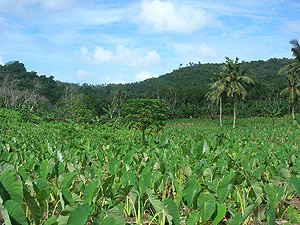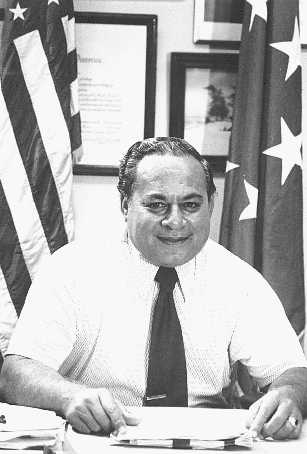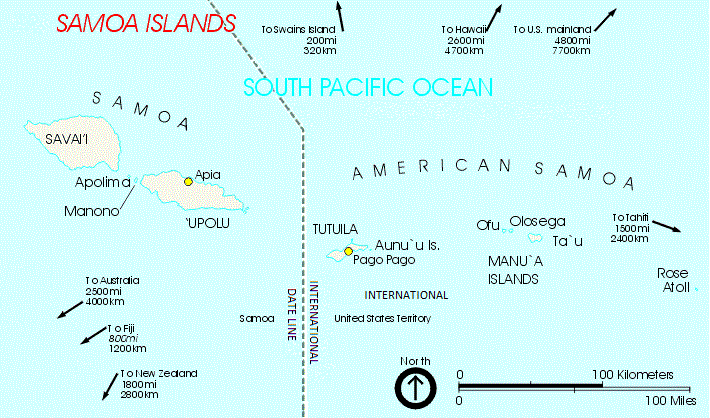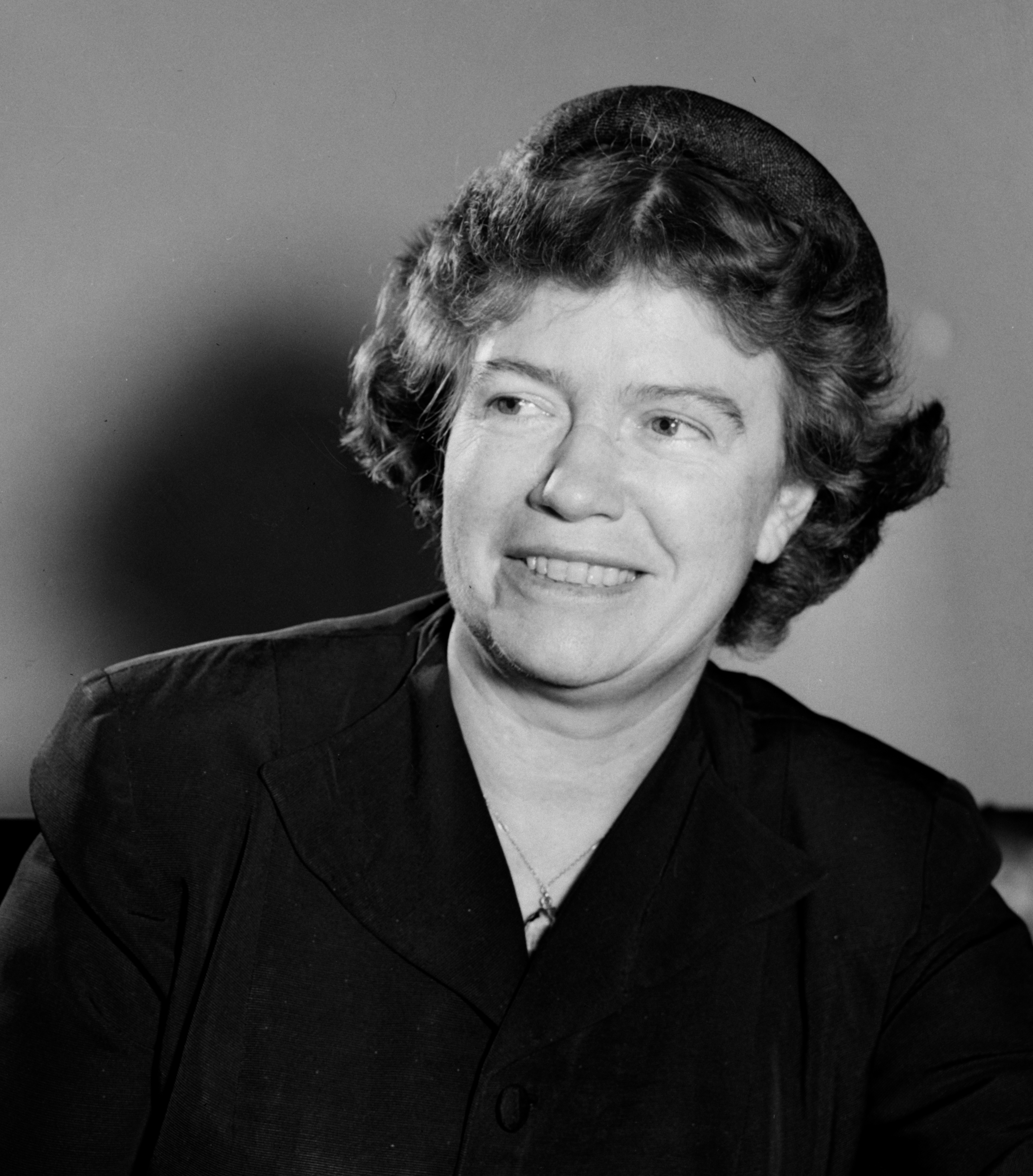|
Vaitogi
Vaitogi is a village in American Samoa. It has many missionaries and tourists who are attracted by shopping for local products. Vaitogi might be most famous of its legends about the Turtle and Shark (Laumei ma Malie). It is said that once, at a time when food was scarce, an old woman took her granddaughter to the bluff at Vaitogi, and holding hands, they leaped into the sea down below. While the young girl was transformed into a shark, the blind grandmother became a turtle. It gives its name to a local U-shaped cove in town, which was listed on the U.S. National Register of Historic Places in 2014. Fogāma'a Crater Trail is a roundtrip hiking trail in Vaitogi. The trail goes by two scenic beaches before ending at the junction with the Fagatele Bay National Marine Sanctuary, Fagatele Bay National Marine Sanctuary Trail. Fogāma'a Crater is a National Natural Landmark. It is home to Tessarea Vaitogi Inn, which is a hotel in town. Etymology Although there is no specific account of ... [...More Info...] [...Related Items...] OR: [Wikipedia] [Google] [Baidu] |
Turtle And Shark
Turtle and Shark (Laumei ma Malie in Samoan) is a place with association to an important legend in the culture of Samoa. It is located on the southern shore of Tutuila, the largest island of American Samoa, a short way south of the village of Vaitogi. The feature known as Turtle and Shark is a U-shaped cove, set between Vaitogi Beach to the north and a basalt cliff to the south. The cove is about measured from east to west and measured from north to south. The topography of the cove is such that it is frequently subjected to high-energy wave action, with spray thrown high into the air. The cove is believed by the Samoan populace to be the location of the climactic scene of the Turtle and Shark legend, one of the island's best-known and popular tales. The earliest documented form of the Turtle and Shark legend was published in 1884 by a missionary: A story is told of a woman and her child, who in a time of great scarcity were neglected by the family. One day they cooked ... [...More Info...] [...Related Items...] OR: [Wikipedia] [Google] [Baidu] |
Tutuila Island
Tutuila is the largest and most populous island of American Samoa and is part of the archipelago of the Samoan Islands. It is the third largest island in the Samoan Islands chain of the Pacific Ocean, Central Pacific. It is located roughly northeast of Brisbane, Australia and lies over to the northeast of Fiji. It contains a large, natural harbor, Pago Pago Harbor, where Pago Pago, the capital of American Samoa, is situated. Pago Pago International Airport is also located on Tutuila. The island's land expanse is about 68% of the total land area of American Samoa. With 56,000 inhabitants, it is also home to 95% of the population of American Samoa. The island has six terrestrial and three marine ecosystems. Tutuila has mountainous regions, the highest point of which is . The island is attractive to tourists because of its beaches, coral reefs, and World War II relics, as well as its suitability for sporting activities such as scuba diving, snorkeling, and hiking. Etymology It is ... [...More Info...] [...Related Items...] OR: [Wikipedia] [Google] [Baidu] |
Tutuila
Tutuila is the largest and most populous island of American Samoa and is part of the archipelago of the Samoan Islands. It is the third largest island in the Samoan Islands chain of the Central Pacific. It is located roughly northeast of Brisbane, Australia and lies over to the northeast of Fiji. It contains a large, natural harbor, Pago Pago Harbor, where Pago Pago, the capital of American Samoa, is situated. Pago Pago International Airport is also located on Tutuila. The island's land expanse is about 68% of the total land area of American Samoa. With 56,000 inhabitants, it is also home to 95% of the population of American Samoa. The island has six terrestrial and three marine ecosystems. Tutuila has mountainous regions, the highest point of which is . The island is attractive to tourists because of its beaches, coral reefs, and World War II relics, as well as its suitability for sporting activities such as scuba diving, snorkeling, and hiking. Etymology It is said that t ... [...More Info...] [...Related Items...] OR: [Wikipedia] [Google] [Baidu] |
Samoan Language
Samoan ( or , ) is a Polynesian languages, Polynesian language spoken by Samoans of the Samoan Islands. Administratively, the islands are split between the sovereign country of Samoa and the Unincorporated territories of the United States, United States territory of American Samoa. It is an official language, alongside English language, English, in both jurisdictions. It is widely spoken across the Pacific region, heavily so in New Zealand and in Australia and the United States. Among the Polynesian languages, Samoan is the most widely spoken by number of native speakers. Samoan is spoken by approximately 260,000 people in the archipelago and with many Samoans living in diaspora in a number of countries, the total number of speakers worldwide was estimated at 510,000 in 2015. It is the third-most widely spoken language in New Zealand, where 2.2% of the population, 101,900 people, were able to speak it as of 2018. The language is notable for the phonology, phonological differenc ... [...More Info...] [...Related Items...] OR: [Wikipedia] [Google] [Baidu] |
Pago Pago
Pago Pago ( or ; Samoan language, Samoan: )Harris, Ann G. and Esther Tuttle (2004). ''Geology of National Parks''. Kendall Hunt. Page 604. . is the capital of American Samoa. It is in Maoputasi County, American Samoa, Maoputasi County on Tutuila, the main island of American Samoa. Pago Pago is home to one of the deepest natural harbors in the South Pacific Ocean, sheltered from wind and rough seas, and strategically located.United States Central Intelligence Agency (2016). ''The World Factbook 2016–17''. Government Printing Office. Page 19. .Grabowski, John F. (1992). ''U.S. Territories and Possessions (State Report Series)''. Chelsea House Pub. .Kristen, Katherine (1999). ''Pacific Islands (Portrait of America)''. San Val. . The harbor is also one of the best protected in the South Pacific,Leonard, Barry (2009). ''Minimum Wage in American Samoa 2007: Economic Report''. Diane Publishing. . which gives American Samoa a natural advantage because it makes landing fish for processi ... [...More Info...] [...Related Items...] OR: [Wikipedia] [Google] [Baidu] |
Margaret Mead
Margaret Mead (December 16, 1901 – November 15, 1978) was an American cultural anthropologist, author and speaker, who appeared frequently in the mass media during the 1960s and the 1970s. She earned her bachelor's degree at Barnard College of Columbia University and her M.A. and Ph.D. degrees from Columbia. Mead served as president of the American Association for the Advancement of Science in 1975. Mead was a communicator of anthropology in modern American and Western culture and was often controversial as an academic. Her reports detailing the attitudes towards sex in South Pacific and Southeast Asian traditional cultures influenced the 1960s sexual revolution. She was a proponent of broadening sexual conventions within the context of Western cultural traditions. Early life and education Margaret Mead, the first of five children, was born in Philadelphia but raised in nearby Doylestown, Pennsylvania. Her father, Edward Sherwood Mead, was a professor of finance at th ... [...More Info...] [...Related Items...] OR: [Wikipedia] [Google] [Baidu] |
1930 United States Census
The 1930 United States census, conducted by the Census Bureau one month from April 1, 1930, determined the resident population of the United States to be 122,775,046, an increase of 13.7 percent over the 106,021,537 persons enumerated during the 1920 census. It was the first time the effects of suburban sprawl were recorded when, during the Roaring Twenties, a significant portion of the working population of New York City moved to New Jersey, aided by the George Washington Bridge which permitted quick transport from the state to Manhattan. Census questions The 1930 census collected the following information: * address * name * relationship to head of family * home owned or rented ** if owned, value of home ** if rented, monthly rent * whether owned a radio set * whether on a farm * sex * race * age * marital status and, if married, age at first marriage * school attendance * literacy * birthplace of person, and their parents * if foreign born: ** language spoken at home b ... [...More Info...] [...Related Items...] OR: [Wikipedia] [Google] [Baidu] |
1940 United States Census
The 1940 United States census, conducted by the United States Census Bureau, Census Bureau, determined the resident population of the United States to be 132,164,569, an increase of 7.6 percent over the 1930 United States Census, 1930 population of 122,775,046 people. The census date of record was April 1, 1940. A number of new questions were asked including where people were five years before, highest educational grade achieved, and information about wages. This census introduced sampling techniques; one in 20 people were asked additional questions on the census form. Other innovations included a field test of the census in 1939. This was the first census in which every state (48) had a population greater than 100,000, and the first census to also include a "long form" (sent to only a subset of the households) with additional questions about socioeconomic and housing characteristics (the "long form" would be used for last time in the 2000 United States census, 2000 census, b ... [...More Info...] [...Related Items...] OR: [Wikipedia] [Google] [Baidu] |
1950 United States Census
The 1950 United States census, conducted by the Census Bureau, determined the resident population of the United States to be 151,325,798, an increase of 14.5 percent over the 131,669,275 persons enumerated during the 1940 census. This was the first census in which: * More than one state recorded a population of over 10 million * Every state and territory recorded a population of over 100,000 * All 100 largest cities recorded populations of over 100,000 On April 1, 2022, the National Archives and Records Administration released scanned census enumeration sheets to the general public, in accordance with the 72 year rule. It is most recent census to have full public availability. Census questions The 1950 census collected the following information from all respondents: * address * whether house is on a farm * name * relationship to head of household * race * sex * age * marital status * birthplace * if foreign born, whether naturalized * employment status * hours worked in w ... [...More Info...] [...Related Items...] OR: [Wikipedia] [Google] [Baidu] |
1960 United States Census
The 1960 United States census, conducted by the United States Census Bureau, Census Bureau, determined the resident population of the United States to be 179,323,175, an increase of 19 percent over the 151,325,798 persons Enumeration, enumerated during the U.S. census, 1950, 1950 census. This was the first census in which all states recorded a population of over 200,000. This census's data determined the electoral votes for the 1964 United States presidential election, 1964 and 1968 United States presidential election, 1968 presidential elections. This was also the last census in which New York (state), New York was the most populous state. Census questions The 1960 census collected the following information from all respondents: * address * name * relationship to head of household * sex * race * age * marital status Approximately 25 percent of households received a "long form" of the 1960 census, which contained over 100 questions. Full documentation on the 1960 census, includi ... [...More Info...] [...Related Items...] OR: [Wikipedia] [Google] [Baidu] |
1970 United States Census
The 1970 United States census, conducted by the Census Bureau, determined the resident population of the United States to be 203,392,031, an increase of 13.4 percent over the 179,323,175 persons enumerated during the 1960 census. This was the first census since 1820 in which New York was not the most populous stateCalifornia overtook it in population in January 1963. This was also the first census in which all states recorded a population of over 300,000, and the first in which a city in the geographic SouthHoustonrecorded a population of over 1 million. Accurate racial census data was required by both the Civil Rights Act of 1964 and the Voting Rights Act of 1965, and the 1970 Census changed to identify race on the basis of self-identification rather than by government census enumerators. Virtually all of the key items from the 1960 census were retained. Data availability Microdata from the 1970 census are freely available through the Integrated Public Use Microdata ... [...More Info...] [...Related Items...] OR: [Wikipedia] [Google] [Baidu] |









